How to Grow Peas From Planting to Harvest Like a Farmer
Author: Jen Worst | Editor: Omar Alonso
Review & Research: Jen Worst & Chris Miller
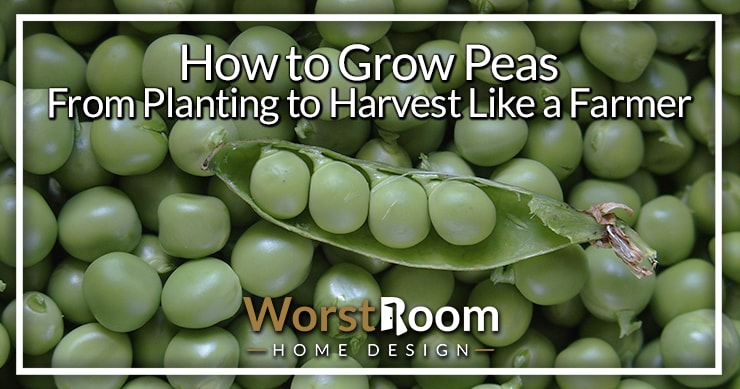
Knowing how to grow peas is simple. The real challenge is in waiting for them to grow so you can enjoy your big harvest, all the while watering and feeding them without immediate gratification.
The green pea may be rather infamous for its ability to give certain princesses sleepless nights, but very few things come close to beating the super-sweet flavor of this humble legume.
Among the oldest cultivated plants in the world, green peas have enhanced the taste of many ancient Roman, Egyptian, and Greek dishes and even the folks of the Bronze Age!
Not only is this legume super tasty, but it’s just as easy to grow as it is to eat, hardly consuming any space or requiring much maintenance.
Additionally, being legumes, peas help fix the nitrogen content in the soil, which makes the element more available for other plants you may grow in the same soil, after your harvest of course. This also makes them excellent companion plants.
It's for these reasons that come spring, peas are the first crops that many folks plant. Whether you’re attempting to turn your thumb green and join this community of gardeners or you’re sick of the store-bought frozen variety, here’s all you need to know on how to grow peas.
Types of Peas to Plant
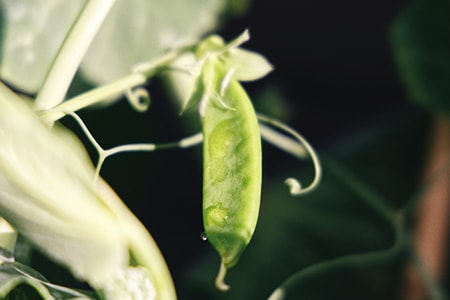
As with any plant, there are different types of peas that you can grow. The most common options that populate home gardens are:
- Pisum Sativum ssp. Sativum: Also known as shelling peas, garden peas, or English peas, this variety features large peas housed in inedible pods.
- Pisum Sativum var. Macrocarpon: More colloquially known as snow peas and sometimes as Chinese pea pods, these plants feature small peas housed in a flat, edible pod.
- Pisum Sativum var Macrocarpon ser. Cv.: Last but not least are snap peas, featuring full-sized peas housed in edible, tender pods.
Many gardeners and farmers also differentiate peas based on whether their pods are edible or not. English peas have non-edible pods, though the legumes inside can be eaten cooked or raw.
If you’re differentiating on this basis, you’ll find that pea plants can be bush/dwarf plants, growing no higher than 16-30 inches at maturity, or telephone/tall plants, that can go up to and beyond 3 feet.
Many cultivators prefer taller plants since these flower and bear fruit over a longer period, as compared to dwarves that bloom and produce their crop all in one go.
When to Plant Peas
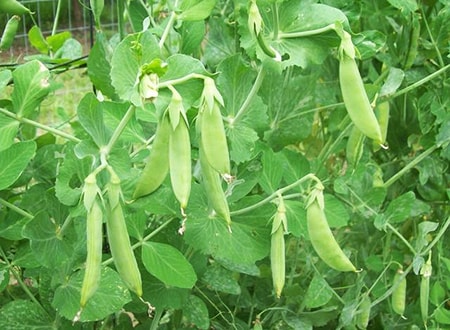
As a trivia tidbit, scientists think pea domestication and cultivation began as soon as humans learned agriculture. We've found carbonized pea fossils in Neolithic archaeological sites around Turkey and Iraq as far back as 7,000 BC.
As mentioned earlier, pea plants are an extremely common sight during spring. You can plant them as soon as the ground thaws, even if more snow is going to make an appearance. Peas do well in cold weather, tolerating light frosts, too.
On germinating, especially, these plants adapt well to the cold and dampness that comes with early spring. Understandably, pea plants don’t do well in the heat; hot summer temperatures mean that your crop production will soon come to an end.
Unfortunately, pea plants have a limited growing season. Therefore, to get a full harvest before the hot summer dries out your plants, plant them as early in the spring as possible—whoever said “plant peas by St. Patrick’s Day” said it right!
Alternately, planting peas at least a month before the first frost-free day/last spring frost day also works. This is when soil temperatures reach at least 45 degrees Fahrenheit.
Remember, pea plants don’t do well in the soaked ground, so hold up on the planting if the soil is soaked from spring rains or melted snow. In case your planting area is too wet for planting and you’re afraid the right weather conditions will pass, you could consider raised garden beds.
Additionally, remember that though one blanket of snow won’t harm your baby pea plants, prolonged exposure to that temperature, over several days, could.
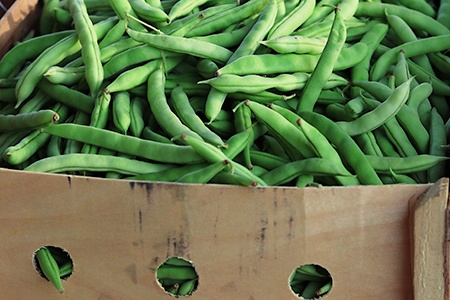
Don’t get discouraged if your first batch dies on you; it can be quite tricky finding the right timing, when all the weather conditions align to let your pea plants grow and your seedlings mature while the weather is still cool.
For the United States and Canada, this is generally February, March, and April, unless you live in a warm area, in which case, these plants can be grown even in the winter months.
If your first harvest is successful, you can consider planting a second round in the late summer or early fall days (around 6-8 weeks before the first date of fall frost).
Pea Plant Growing Conditions
Peas favor sandy loam soil that’s fertile and drains well. However, these plants will bloom where they’re planted regardless of the soil (unless it’s impermeable clay).
The preferred pH level is anywhere between 6 and 7.5. If the soil is too acidic, agricultural lime can be used for balance.
Additionally, ample amounts of compost must be used to ensure that the soil remains friable (easily crumbled). As mentioned earlier, the soil needs to be at least 45 degrees Fahrenheit (7 degrees Celsius) for the pea plants to germinate.
The warmer the soil, the faster the maturing, so don’t just depend on generic information on the seed packet when it comes to maturity.
How to Plant Peas
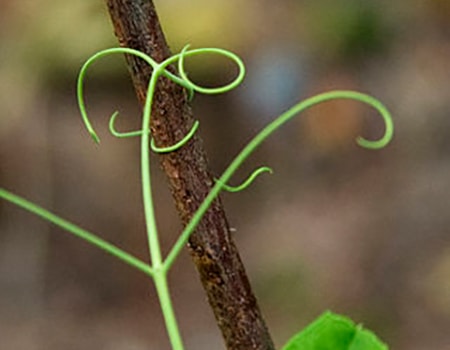
Peas are extremely easy to grow at home—all you need is 3 centimeters of fertile ground, sticks for growth support, and a weekly feed of potash-rich fertilizer. Whether you want to start with seeds or seedlings, here’s how to plant and harvest pea plants:
Preparing the Planting Site
Choose a sunny spot for your plants—sun-grown peas are the sweetest. Ensure that the soil drains well in the spot, so that there is no risk of seed rot, which is when the seeds rot well before they germinate.
As mentioned earlier, use raised beds (around 6-8 inches high) to ensure sufficient drainage. This can also be done by forming mounds as rows in your garden.
For extra seed wellness, turn the beds and add around 2-3 inches of manure or compost, especially if it’s a fall crop. You don't need to worry about the maggots in your compost, just turn it all in and under.
Wood ashes and bonemeal are also great additions; peas thrive on potassium and phosphorus (so make sure you get your fertilizer numbers right), but the excess nitrogen will encourage the growth of foliage instead of just pods of flowers.
If you’re growing tall pea plants, set up poles or use a trellis for planting, so that the young tendrils have surfaces to climb onto as soon as they emerge from the soil. They're wonderful climbing vegetables that will cling to anything you give them.
How to Plant Peas From Seeds
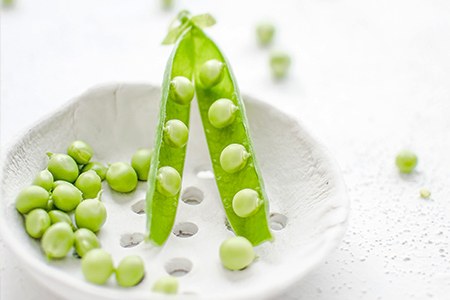
If you want to grow your plants from scratch, sow your pea seeds between March and early July. If you want the crop ready earlier, around May, sow the seeds in the fall or during late winter (though this means that your plants are at risk from extremely cold weather and rodents/pests).
Sow the seeds in a sunny spot that drains well. As mentioned earlier, use plenty of compost—mushroom compost and/or well-rotted manure work wonders when it comes to improving soil quality.
With a spade or hoe, make a shallow trench that’s roughly 22 cm wide and 3 cm deep on your rows. Sow the seeds in two parallel lines, with around 10 cm between the seeds. Cover the seeds with soil and water them amply—you should see seedlings in a couple of weeks.
You could also start your pea planting indoors in the fall months; this keeps plants safe from pests. For better germination, soak the seeds overnight. Don't forget to harden them by slowly introducing them to the outdoors for an increasing number of hours per day before transplanting them.
How to Plant Pea Seedlings
If you’re the impatient type and want to use seedlings instead of seeds, go ahead but remember to support your plants with sticks or a trellis in their younger days, so that they don’t flop about on the ground.
Pea plants have tendrils that wrap around surfaces they come in contact with, so provide the right surfaces (thin enough for the tendrils to wind around). You could also use ‘pea sticks’ for the same:
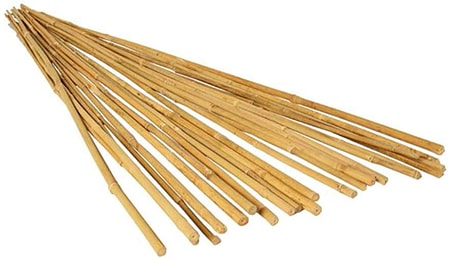
Remember, if you can, opt to sow seeds instead of using seedlings, since these plants don’t really transition well from peat pots to the ground. Their young roots get easily disturbed, resulting in minimal yield.
How Tall Do Peas Grow?
Bush/dwarf pea plants grow no higher than 16 to 30 inches at full maturity. Telephone/tall plants can grow up to and beyond 3 feet in height.
How Long Do Peas Take to Grow?
Most of the pea plant varieties pass from seed to full maturity in 60 to 70 days and can be harvested at that time.
When to Harvest Peas
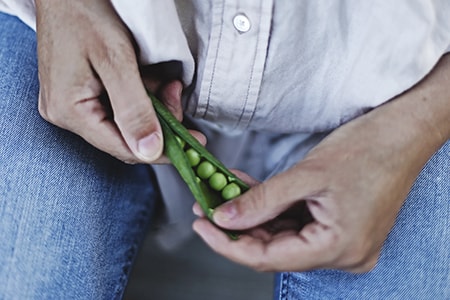
Peas are ready for harvest around 60 to 70 days after the seeds are sown. Some varieties are ready for harvest when you can see the outlines of peas forming inside the pods, while others need to be fully swollen with peas for harvest.
Harvest them as early in the day as possible, as soon as the morning dew has evaporated. This is when they're most crispy and easiest to remove from the vine, which helps prevent damage to the plant or pods.
How to Harvest Peas
Picking the pods should be done upwards from the bottom of the plant, since the bottom is the most mature part. If those further up the plant are not yet ready, you can leave them for another few days.
Using two hands to harvest will prevent any damage to the plant. Begin your harvest soon after the morning dew has dried so that the pods are firmer. This helps prevent damage to the pods and helps them snap off of the vine easier.
Pests & Diseases Affecting Pea Plants
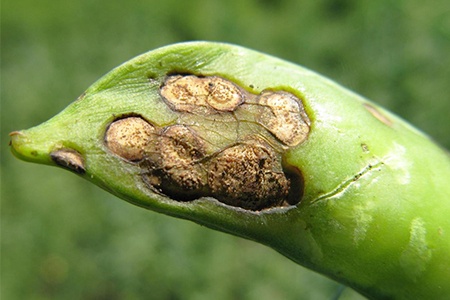
One of the most major risks to pea plants are aphids; however, fortunately, these can be easily controlled—all it takes is a cold-water spray to push the bugs off the leaves and to the ground.
In the case of heavy infestation, pyrethrum, rotenone, and insecticidal soap sprays work great. If you don’t restrict them, aphids can end up spreading mosaic virus.
Another common disease that pea plants face is powdery mildew, an increasingly common occurrence with increasing warmth in the weather conditions. They can also fall victim to pea enation mosaic virus, root rot, pea leaf roll virus, and fusarium wilt.
To keep these at bay, you can buy disease-resistant varieties and practice crop rotation (this keeps the root rot at bay). To ensure that your pea plants don’t fall prey to soil-borne diseases, restrict the planting of any legumes in the same bed to not more than once every 3 years.
That's How to Grow Peas!
Peas are all kinds of delicious and easy to grow. A little bit of effort can fetch you quite a rewarding crop. Just bear in mind the right conditions and requirements for your pea plant’s growth and your harvest will be bigger than your stomach can handle! Now you know how to grow peas like the best of them.



